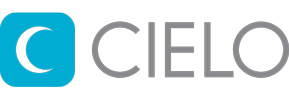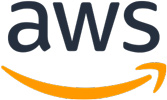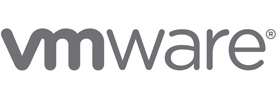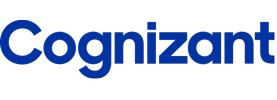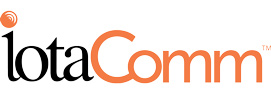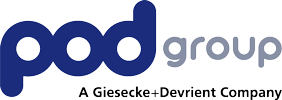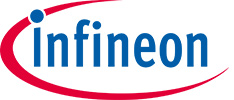World of IoT 
IoT in Retail
Speciality
Application Types (click for more details)Hospitality
Application Types (click for more details)Stores
Application Types (click for more details)Speciality
IoT technology is used in speciality stores such as fuel stations, casinos, and cinemas to manage inventory, optimise check-out lines, automate ordering and delivery, and personalise marketing. IoT enables cashier-less payment systems and can track buyer behaviour.
Fuel Stations
IoT technology is used in fuel stations to monitor underground fuel tank volumes and water levels, manage inventory to optimise ordering, supply, and delivery.
Casinos
IoT technology in used in casinos to monitor players and survey customers to provide personalised offers and convert visitors into regular customers. RFID chips are used in casinos to enhance security and send alerts and flag suspicious behaviour.
Bowling
IoT sensors are used in bowling alleys to control bowling lanes and reset pins and send information to the scoring system. IoT technology is also used to automate billing based on lane use.
Cinemas
IoT technology is used in cinemas to manage light channels, HVAC systems, audio, and visual equipment, streaming and projectors.
Special Events
IoT technology is transforming special event such as music concerts and sporting events. IoT-enabled wristbands that trigger lighting, RFID bands that replace paper ticketing and can be used for purchasing at events and IoT-enabled headphones that tailor sound quality.
Retail is a high-stakes industry where always-on connectivity is critical, even more so following the pandemic. Transactions need to go cashless, stock needs monitoring, and pop-up shops can’t wait for fixed-line broadband: they need grab-and-go IoT connectivity that lets them go straight to their customers.
IoT gives retailers the power to do all this and more. But many retailers lack the time, resources, or expertise to get started with IoT.
We’re here to fix that.
We help businesses optimise processes, enhance decision-making, increase revenue, and more through custom-built IoT and mobile connectivity solutions, available across 185 countries and 960 networks.
Founded in 2015, we’re a team of creators and tech lovers who believe things work better connected. We’re UK-based, but hail from all over the world.
Like our namesake—the supercontinent that connected the world before separating into the continents of today—we’re connecting everything.
Contact details:
Dan Cunliffe, Managing Director
sales@pangea-group.net
Hospitality
IoT technology is used in the hospitality industry to reduce operational costs, automate customer services, and deliver an exceptional customer experience by offering a personalised service.
Hotels
IoT applications include guest data collection, predictive maintenance to reduce guest disruptions, speed up the check-in process, personalised room settings such as lighting control and temperature and catering preferences. IoT helps to save on HR, front desk management and housekeeping costs. IoT sensors to detect vacant rooms to conserve energy.
Restaurants
IoT technology is used in restaurants and commercial kitchens to monitor food service equipment, ensure compliance and regulatory standards, and manage inventory. IoT applications include temperature sensors for warming stations, connected sensors for service equipment, food waste management, automated supply chain, monitoring for a safe cooking environment, display systems for improving front-of-house and back-of-house for tracking orders.
Bars
IoT technology is used in the bar and beverage industry to monitor portion control and dispensary, increase revenue and profits, prevent theft and overpouring, improve speed of service and customer experience.
Cafes
IoT technology is used in cafes to monitor coffee machine usage for better maintenance, ensure proper hygiene of milk line cleaning, manage inventory for ordering coffee beans and optimise pricing based on sales and demand.
Clubs
IoT technology is used in night clubs to create immersive sound and lighting experiences, improve speed of service at bars and create a personalised bottle service.
Stores
Retail stores, groceries and malls are increasingly adopting IoT to maintain their equipment such as refrigerators and escalators. IoT technology can help stores to move merchandise more efficiently through tracking supply and demand. IoT-enabled mobile applications connect customers with the retailer. Smart stores and malls can use IoT to track customer traffic to customise the in-store shopping experience.
Supermarkets
IoT technology is used in supermarkets to detect stock levels, reduce equipment downtime, and improve customer service. IoT applications include smart labelling and smart shelves to track inventory and purchasing habits, smart grocery carts to enable automated checkout, smart fridges to detect when food is spoiled and self-serve checkouts.
Malls
IoT technology is used in malls to optimise store management, monitor the frequency, length, and route of the customer journey, detect customer flow and foot traffic. IoT sensors help to maintain equipment such as revolving doors and escalators, IoT-enabled cameras can detect theft and help shoppers find parking spaces. IoT-enabled digital displays can drive marketing tactics.
Convenience Stores
IoT technology is used in convenience stores to deter petty theft and age-restricted purchases and manage pest control. Smart vending machines and connected coffee machines monitor product purchases for restocking while smart shelves track items for automated checkout and inventory.
Things
POS Terminals
Smart Point-of-sale terminals to process transactions, track customer behaviour and update inventory. POS terminal hardware such as touchscreens, physical keypad, inbuilt camera for barcode scanning, inbuilt receipt printer.
ATMs
ATMs installed with IoT sensors that can detect movement for security purposes, send alerts, perform predictive maintenance and monitor energy efficiency.
Vending Machines
Smart vending machines that process credit and debit transactions, built-in security to reduce tampering and product loss, IoT-sensors to ensure perishable items remain fresh, tracking and managing inventory, collecting customer data, predictive maintenance to ensure machines don’t go out of order.
Security Camersa
IoT-enabled surveillance devices that are remotely monitored and able to make decisions in real-time security conditions, collect and analyse data to improve security processes and systems and send alerts to law enforcement.
Beacons
IoT-enabled sensors use Bluetooth geolocation to support shopper mapping, customer loyalty management, direct marketing via SMS to drive sales for promotions and special offers.
Digital Signs
Digital signage that is activated systems, sensors and connected devices and is sensitive to surroundings and reactive to instruction. Digital signage devices such as screens, tablets, iPads, monitors, smart TVs, commercial screens. Digital signage hardware such as media players.
Automated Checkout
IoT-enabled self-checkout kiosks that manage transactions, QR codes embedded on products, contactless payment and tracking customers previous purchases and promotions.
Smart Shelves
Store shelves equipped with RFID readers to scan tagged items. IoT devices for smart shelves include an RFID tag, RFID reader and microchip antenna.
Digital Mirrors
IoT-enabled mirrors that do skincare analysis, test make-up, hairstyles and colours, curate fashionable content, can be used to upsell and view buying history, provide data on customer shipping and buying behaviour.





